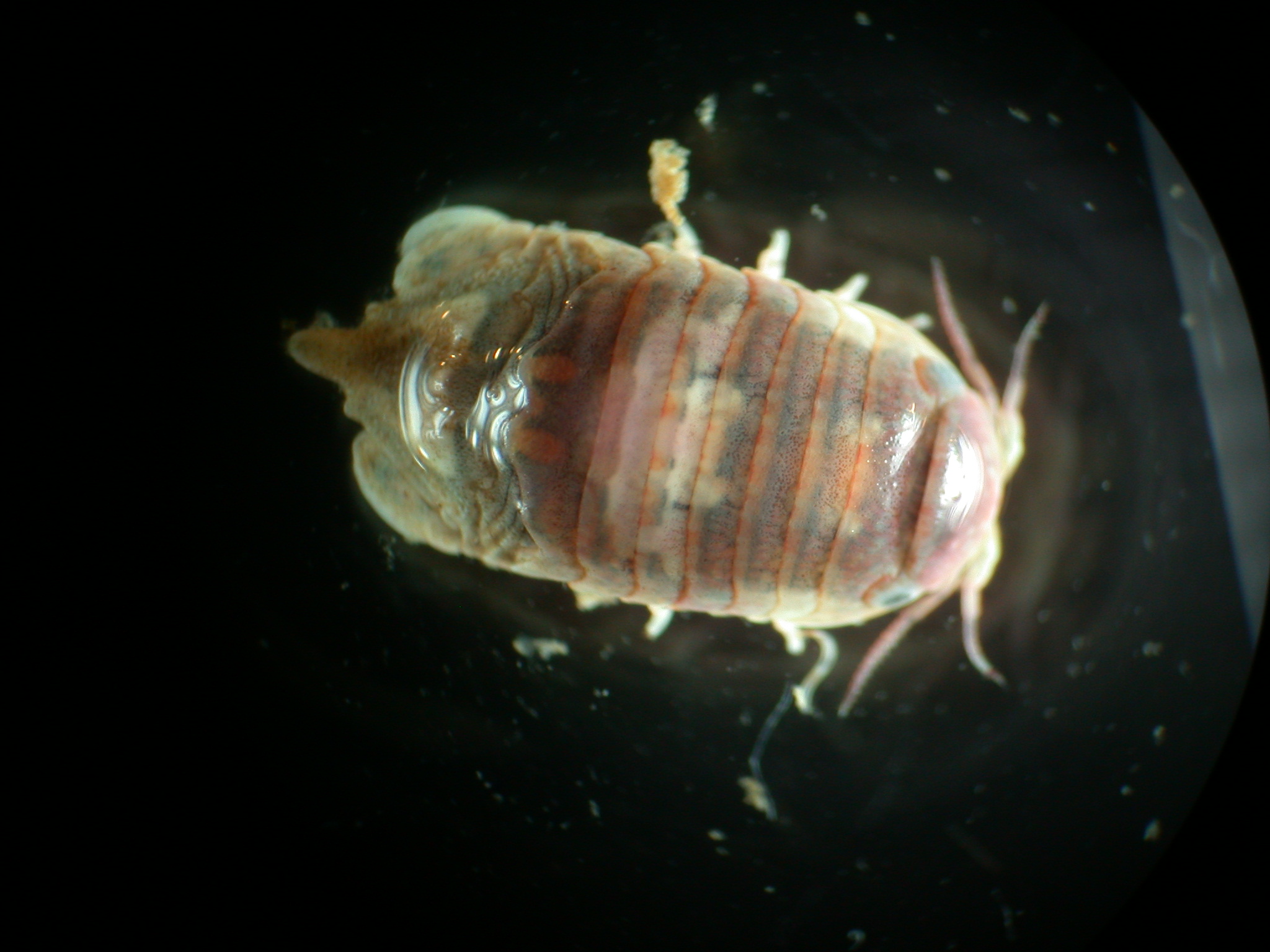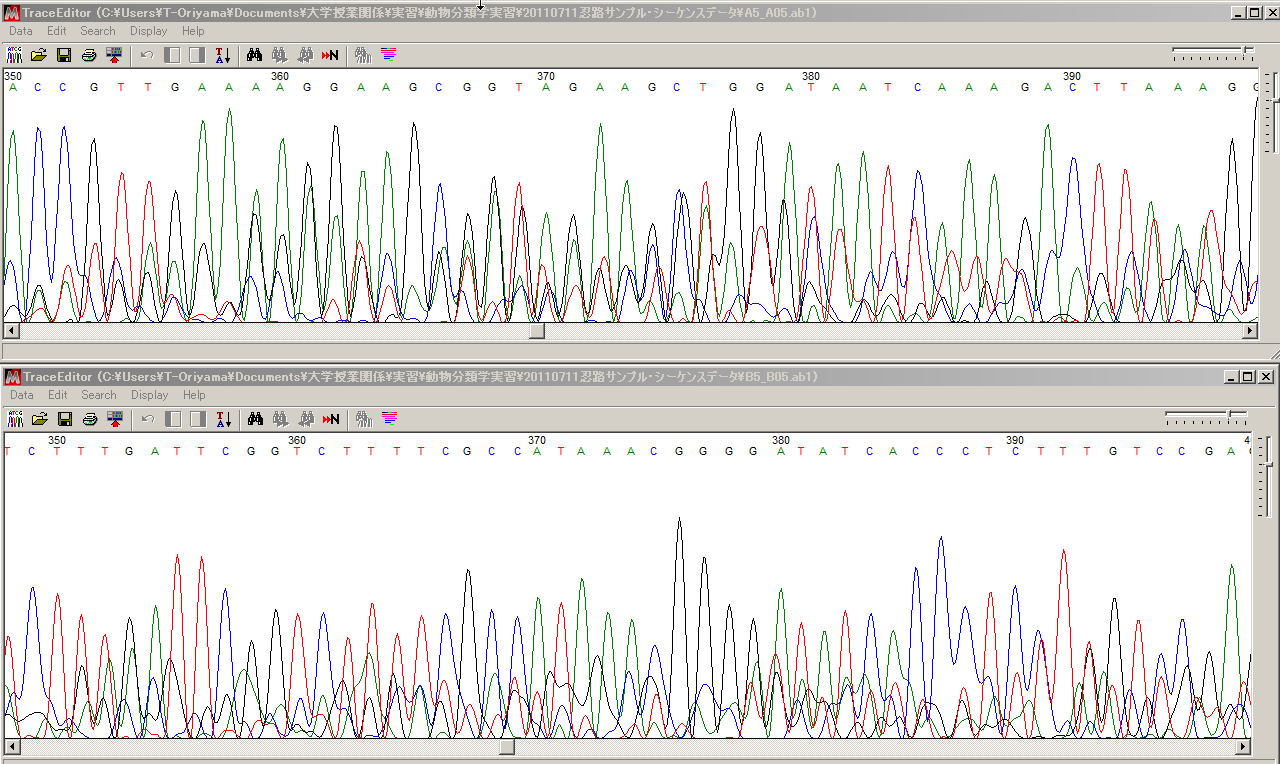A sphaeromatid isopod (Fig. 1) was btained among laminarian holdfast at Oshoro Bayy, Hokkaido, Japan, about 43°12′N, 140°51′E, on 30 May 2011 by Tetsuro Oriyama, photographed and identified by Hiroshi Kajihara as Dynoides dentisinus Shen, 1929 based on Nunomura (1992: 225, pl. 82-5; fig. 21-202 I), before fixed in 99% EtOH. DNA was extracted from the whole specimen using the silica method (Boom et al. 1990) with some modifications. Extracted DNA was dissolved in 30 µl of deionized water and has been preserved at –20°C.Remaining morphological voucher specimen has been deposited at the Hokkaido University Museum under the catalogue number ICHU22090119 (contact: Dr. Hiroshi Kajihara, kazi@mail.sci.hokudai.ac.jp).
Amplification of about 600-bp fragment of mitochondrial cytochrome c oxidase subunit I gene (COI) was attempted by polymerase chain reaction (PCR) using LCO1490(5′-GGTCAACAAATCATAAAGATATTGG-3′) and HCO2198 (5′-TAAACTTCAGGGTGACCAAAAAATCA-3′)(Folmer et al. 1994). A hot start PCR was performed by a thermal cycler, iCycler (Bio-Rad), in a 20-µl reaction volume containing 1 µl of template total DNA (approximately 10–100 ng) and 19 µl of premix made with 632-µl deionized water, 80-µl Ex Taq Buffer (TaKara Bio), 64-µl dNTP (each 25 mM), 0.2-µl each primer (each 10 µM), and 0.1-µl TaKara Ex Taq (5 U/µl,TaKara Bio). Thermal cycling condition comprised an initial denaturation at 95°C for 30 sec; 30 cycles of denaturation at 95°C for 30 sec, annealing at 45°C for 30 sec, and elongation at 72°C for 45°C and a final elongation at 72°C for 7 min.
The PCR product was purified with the silica method (Boom et al. 1990). Both strands were sequenced with a BigDye® Terminator v3.1 Cycle Sequencing Kit (Applied Biosystems) following the manufacturer's protocol, using the same primer set as the initial PCR amplification. Sequencing was performed with ABI Prism 3730 DNA Analyzer (Applied Biosystems). Chromatogram and sequence data were operated with MEGA v5 software (Tamura et al. 2011).
Results
The COI region was successfully amplified, but the chromatogram data of the sequence was not reliable (Fig. 2). It may be due to contamination of stomach contents.
Taxonomy
Order Isopoda
Family Shaeromatidae Latreille, 1825
Genus Dynoides Barnard, 1914
Dynoides dentisinus Shen, 1929
(Figs 1, 2)

Fig. 1. ICHU22080191, identified as Dynoides dentisinus Shen, 1929

Fig. 2. Part of the chromatogram data of the sequences.
References
Boom, R., Sol, C. J. A., Salimans, M. M. M., Jansen, C. L., Wertheim-van Dillen, P. M. E., and van der Noordaa, J. 1990. Rapid and simple method for purification of nucleic acids. Journal of Clinical Microbiology 28: 495–503.
Folmer, O., Black, M., Hoeh, W., Lutz, R. and Vrijenhoek, R. 1994. DNA primers for amplification of mitochondrial cytochrome c oxidase subunit I from diverse metazoan invertebrates. Molecular Marine Biology and Biotechnology 3: 294–299.
Nunomura, N. 1992. Isopoda. Pp. 205–233. In: Nishimura, S. (Ed.) Guide to Seashore Animals of Japan with Color Pictures and Keys. Vol. II. Hoikusha, Osaka.
Tamura, K.,Dudley, J., Nei, M. and Kumar, S. 2007. MEGA4: Molecullar Evolutionary Genetics Analysis (MEGA) software version 4.0. Molecular Phylogenetics and Evolution 24: 1596–1599.